Survey of UVM Students and Faculty
In order to gauge UVM student and faculty perception, knowledge, and beliefs surrounding ghosts and ghost narratives on campus, and the processes that lead to these beliefs, we conducted a survey of 141 UVM community members. We sent the survey directly to friends, and sent it out to all Environmental Studies and Geography faculty and students. This may have biased our findings and as a result this survey may not be a reflection of the beliefs of the community as a collective.
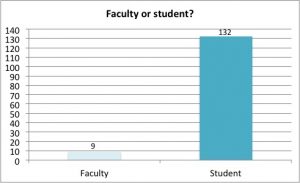
We had an overwhelming response from students.
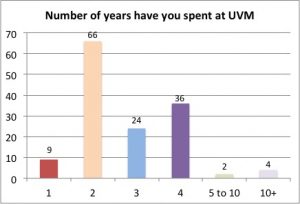
Again, most of our respondents were students who haven’t been at UVM for very long.
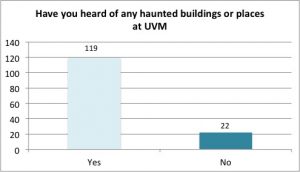
A majority of our respondents are aware of ghost stories in the community.
Respondents who answered ‘yes’ to this question were prompted to answer the question, “Which places have you heard were haunted?” What have you heard about them?”
101 out of 119 respondents mentioned the building Converse in their answers. Meanwhile, other buildings that are rumored to be haunted such as Coolidge, Bittersweet, Redstone Hall, and Grasse Mount, were only mentioned 10, 7, 6, and 2 times respectively.
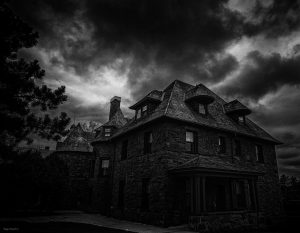
The dominant ghost narrative on campus is clearly Henry, the student who killed himself, who allegedly haunts Converse. You can find more about him in our Converse Hall Case Study.
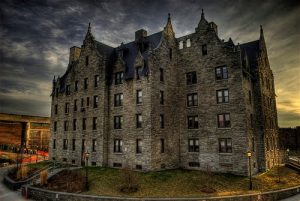

Despite the fact that most of our respondents knew of ghost stories, more than half do not believe that there are haunted buildings at UVM.
Respondents who answered ‘yes’ to this question were prompted to discuss if they have personal experience with ghosts, and only 3 people responded that they had in fact encountered a ghost. This suggests that the majority of people who believe in ghosts do so because of word of mouth and faith.
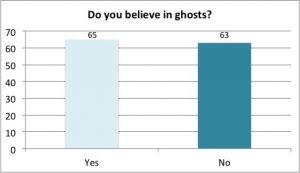
We found that belief in ghosts in general was almost split evenly for ‘yes’ and ‘no’. More people believe in ghosts in general than believe that there are haunted places at UVM, despite the fact that rumors of hauntings at UVM are well documented. Attempting to understand why people believe in ghosts in general but not at UVM would be something to investigate in future research.
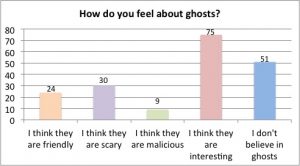
Most respondents were more intrigued by ghosts than scared by the thought of them. This could be a result of the fact that participants were prompted to think about UVM ghosts earlier in the survey, and most of them thought of Henry, who students seem to find non-threatening for the most part. Therefore, it is difficult to know if the respondents find ghosts in general not to be so scary, or just the ones they have heard about at UVM.
Paranorma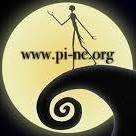 l Investigators of New England (PI-NE):
l Investigators of New England (PI-NE):
In addition to interviewing students, our team interviewed a group of paranormal investigators as well. One night, we drove to Jericho, VT to learn more about the supernatural from Paranormal Investigators of New England, otherwise known as PI-NE. PI-NE is a non-profit group of paranormal investigators that assist people who are haunted, figure out why things are happening, and what might be haunting them.
PI-NE helped our group further understand three major themes when it comes to hauntings: trauma, location, and perceptions of the haunted.
Trauma is an important aspect for supernatural occurrences. According to the investigators, spiritual energies feed off of stress put off by humans. If a lot of stressful or traumatic events have happened in a specific place, it is easy for the supernatural to use that negative energy to take on the role of a ghost, and haunt those who inhabit the area. Mike, Betty, Heidi, and Karen, from PI-NE explained that colleges are great for generating supernatural energies. This is due to all that comes with the college experience. Exams, all-nighters, parties, and hookup culture, all contribute to a place full of trauma for spirits to feed off of. Mike explained that “Colleges are great for that, because you have people like yourselves all in a time of trying to go out and figure out who you are, all the big questions of life and everything.”
Location is also a key factor for hauntings. Karen explained that “What type of rock is underneath, running water, a lot of times [contribute]. If there are railroad tracks nearby, I don’t know why exactly that draws energy, quartz, limestone, are both great conductors for energies.”
Perceptions play a big part in supernatural phenomenon as well. Seasonal patterns contribute to experiences. Mike explained that “All summer, we could literally go like half the summer without one single call. Well whats everyone doing? They’re on vacation, they’re out of their homes, they’re inviting people in [their homes], they’re having a good time, they’re not thinking about it. Winter time, fall on, fall obviously you have October, October plays a psychological part in it, because people are now looking for ghosts because it’s “cool”, but also they’re starting to spend more time now in their home.”
Betty also pointed out the importance of how one perceives and experiences a haunting on a personal level. She stated, “Also when I think of patterns I don’t think of seasonal ones but I think of patterns of like when you get into a home, what happens? Because as director I know I’m always watching the investigators pretty closely whether they realize it or not, but I’ll see patterns and I know what to look for in Heidi, you know, when something starts going, I’ll see that its almost like a wave going through, you know, I can tell Heidi’s not feeling well, and she’s very sensitive. So I’ll see that pattern and I’ll see the intensity and you know um I’ll just see heavy concerns and then someone starts getting touched and the equipment starts going so when I think of patterns of whats in the home, sometimes you can go in and it just feels like nothing and then other times it just starts coming on and the more you’re there and trying to pull it in but no antagonize it, then you can start to see things happen